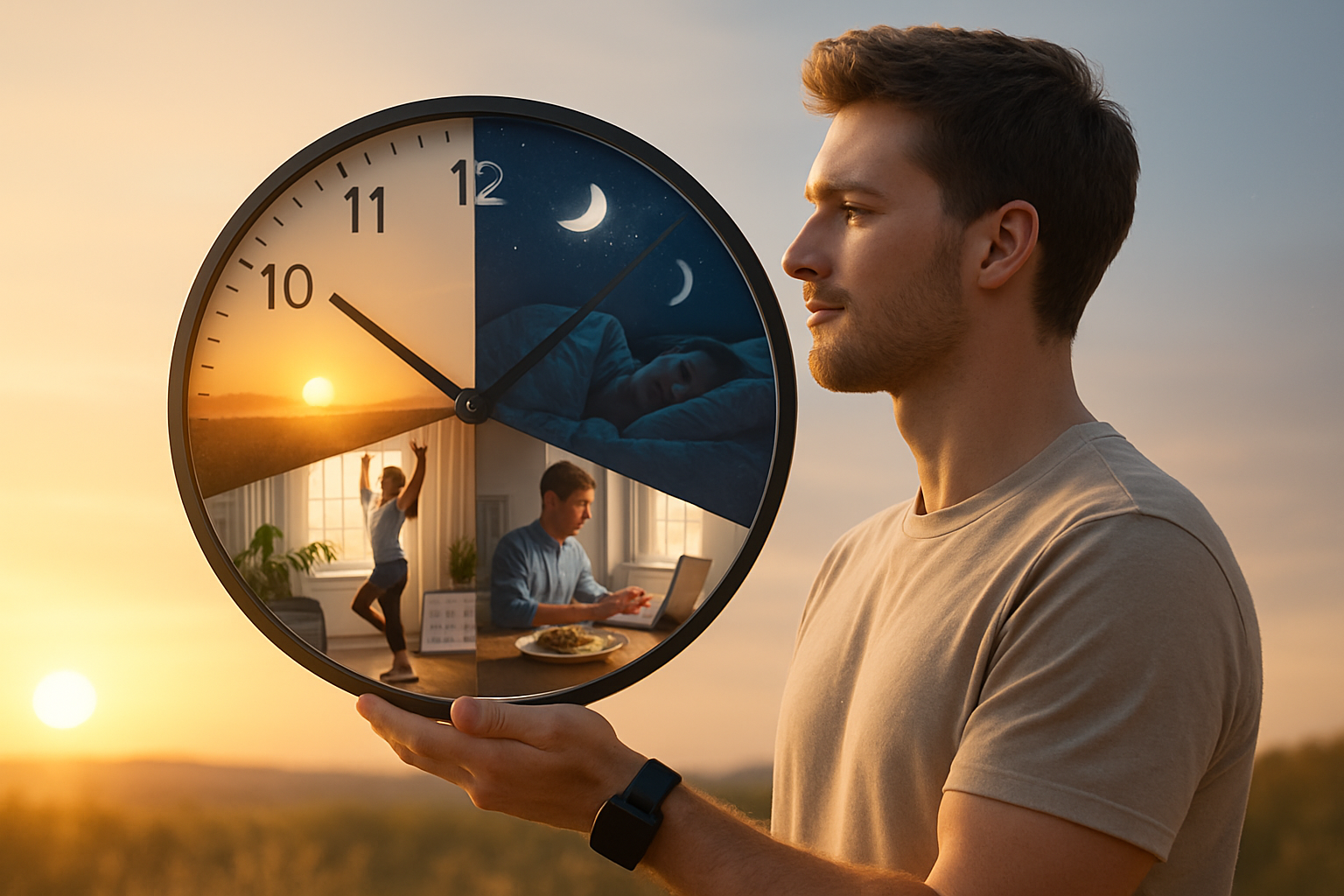Biohacking Your Circadian Rhythm: The Future of Sleep Optimization
The gentle hum of your smart mattress adjusts as you drift into a perfectly timed slumber. Your bedroom's ambient lighting mimics the sunset, gradually dimming to signal your body it's time to rest. Welcome to the cutting-edge world of circadian rhythm biohacking, where technology and biology intersect to revolutionize our sleep patterns. But what exactly is this innovative approach, and how can it transform your nightly rest?

The Science Behind Our Internal Clocks
At the heart of circadian rhythm biohacking lies the intricate dance of our body’s internal timekeeper. This biological clock, primarily regulated by the suprachiasmatic nucleus in our brain, orchestrates a complex symphony of hormonal and physiological processes throughout the day. Melatonin, often dubbed the sleep hormone, plays a crucial role in this delicate balance, rising in the evening to induce drowsiness and falling in the morning to promote wakefulness.
Research has shown that our circadian rhythms influence far more than just sleep-wake cycles. They affect body temperature, hormone release, eating habits, and digestion. When these rhythms are disrupted, it can lead to a host of health issues, including insomnia, metabolic disorders, and even an increased risk of certain cancers.
Modern Lifestyle: A Circadian Disruptor
In our 24/7 connected world, maintaining a healthy circadian rhythm has become increasingly challenging. The ubiquity of artificial light, particularly the blue light emitted by our screens, can suppress melatonin production and throw our internal clocks into disarray. Late-night meals, irregular work schedules, and jet lag further compound the problem, leading to what chronobiologists term circadian misalignment.
This misalignment can manifest in various ways, from difficulty falling asleep to daytime fatigue and mood disturbances. More alarmingly, chronic circadian disruption has been linked to an increased risk of obesity, diabetes, cardiovascular disease, and certain types of cancer.
Biohacking Techniques for Circadian Optimization
Circadian rhythm biohackers employ a range of strategies to realign their internal clocks with nature’s cycles. These techniques often combine cutting-edge technology with age-old practices:
-
Light Therapy: Specialized lamps that mimic natural sunlight are used to regulate melatonin production. Some biohackers use programmable smart bulbs that adjust their color temperature throughout the day, mimicking the sun’s natural progression.
-
Temperature Regulation: Our body temperature naturally drops as we prepare for sleep. Some biohackers use cooling mattress pads or precisely timed hot baths to manipulate their core temperature and induce sleepiness.
-
Chrononutrition: This involves timing meals to optimize metabolic processes. For example, some practitioners advocate for time-restricted feeding, aligning food intake with the body’s natural digestive rhythms.
-
Wearable Technology: Advanced sleep trackers and smart watches now offer detailed insights into sleep patterns and circadian rhythms, allowing users to fine-tune their habits for optimal alignment.
-
Melatonin Hacking: While not without controversy, some biohackers experiment with precise, timed doses of melatonin supplements to shift their sleep cycles, particularly when combating jet lag.
The Promise and Perils of Circadian Biohacking
Proponents of circadian rhythm biohacking report a range of benefits, from improved sleep quality and increased daytime energy to enhanced cognitive performance and mood stability. Some even claim that optimizing their circadian rhythms has led to breakthroughs in personal productivity and creativity.
However, the field is not without its skeptics. Critics argue that the long-term effects of manipulating our internal clocks are not yet fully understood. There are concerns about the potential for dependency on technology and supplements, as well as the risk of over-optimization leading to anxiety or obsessive behaviors around sleep.
Future Horizons in Circadian Science
As research in chronobiology advances, we’re likely to see even more sophisticated approaches to circadian optimization. Scientists are exploring the potential of gene therapy to influence our internal clocks at a molecular level. Others are investigating how circadian principles could be applied to personalized medicine, tailoring treatments to an individual’s unique biological rhythms.
The intersection of artificial intelligence and circadian science also holds promise. Imagine AI systems that can predict and preemptively adjust for circadian disruptions, or smart homes that automatically optimize lighting, temperature, and even air composition to maintain perfect circadian alignment for their inhabitants.
Chronohacks for Better Sleep
-
Stick to a consistent sleep schedule, even on weekends
-
Expose yourself to bright light upon waking
-
Avoid blue light 2-3 hours before bedtime
-
Keep your bedroom cool, dark, and quiet
-
Practice relaxation techniques like deep breathing or meditation before bed
-
Avoid caffeine and heavy meals in the evening
-
Exercise regularly, but not too close to bedtime
As we continue to unravel the mysteries of our internal clocks, circadian rhythm biohacking stands at the forefront of a new era in sleep science. By harmonizing our modern lifestyles with our ancient biological rhythms, we may unlock unprecedented levels of health, productivity, and well-being. While challenges and unknowns remain, the potential benefits of optimizing our circadian rhythms are too significant to ignore. As always, anyone considering major changes to their sleep routine should consult with healthcare professionals to ensure safe and effective implementation.





